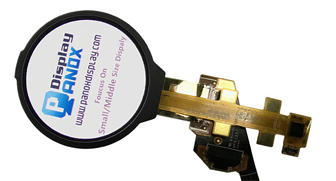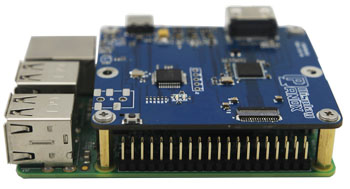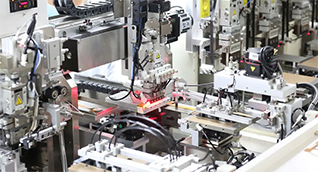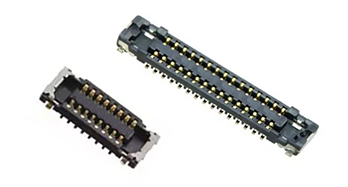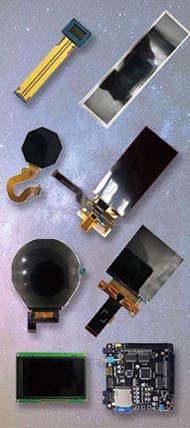OLED versus LCD displays differ significantly in technology and applications, impacting cost, performance, and suitability for various industries. For Chinese manufacturers, wholesalers, and OEMs like Panox Display, understanding these differences is crucial to offer customized, competitive display solutions that meet global demand. Also check: OLED
What Are the Fundamental Differences Between OLED and LCD Technologies?
OLED (Organic Light Emitting Diode) displays produce light through organic compounds that emit light when an electric current passes through, requiring no backlight. LCD (Liquid Crystal Display) relies on a separate backlight to illuminate liquid crystals that display colors and images. This distinction makes OLED thinner, more flexible, and capable of deeper blacks compared to LCD panels, which are more rigid and generally more affordable.
OLED technology provides better contrast and wider viewing angles, while LCD typically offers longer lifespan and lower power consumption in static images. These differences affect manufacturing complexity and costs, critical for China-based factories and suppliers focusing on OEM or ODM projects.
How Do OLED and LCD Displays Compare in Terms of Durability and Lifespan?
OLED displays typically have a shorter lifespan than LCDs due to organic material degradation, especially blue OLED pixels. LCDs, with their inorganic liquid crystals and LED backlights, generally last longer and maintain consistent brightness over time. However, recent advancements in OLED materials and manufacturing processes by suppliers like Panox Display have improved durability, making OLEDs more viable for industrial and commercial B2B applications.
Durability in manufacturing also depends on handling and integration. LCDs are favored in environments requiring robustness, while OLEDs offer premium display quality where lifespan can be balanced with performance.
Which Industries Benefit Most from OLED versus LCD Displays?
Industries such as wearable devices, automotive dashboards, VR gear, and military equipment benefit significantly from OLED's superior contrast, flexibility, and color quality. Meanwhile, LCDs serve well in applications like industrial monitors, televisions, and outdoor signage where cost-efficiency and longevity are paramount.
Chinese manufacturers offering OEM customization, like Panox Display, tailor their products to specific industry needs, delivering micro-OLEDs for precision optoelectronics and large-format LCDs for commercial displays.
Why Are OLED Displays Usually More Expensive Than LCDs?
OLED production involves complex organic material deposition and precision fabrication techniques, leading to higher costs compared to LCD's mature, high-volume manufacturing processes. Additionally, OLED yields can be lower, increasing costs for factories and suppliers.
The expense affects wholesale pricing and OEM offers. Panox Display, by leveraging advanced automation and partnerships with top-tier manufacturers such as AUO and BOE, helps reduce costs while retaining quality, making OLED technology more accessible globally.
How Do Power Consumption and Energy Efficiency Differ Between OLED and LCD?
OLED displays emit light at the pixel level, consuming less power when displaying black or darker content but more power with bright or white screens due to increased pixel illumination. LCDs use a constant backlight, leading to relatively steady power consumption regardless of displayed content.
For manufacturers and OEMs focusing on battery-powered or energy-sensitive devices, selecting between OLED and LCD affects product design and operational efficiency.
What Are the Key Manufacturing Challenges When Producing OLED and LCD Panels in China?
Producing OLED panels requires controlled environments to prevent organic material degradation and advanced cleanroom facilities, making OEM and ODM setup expensive and technology-intensive. LCD production, while established, entails precise assembly of multiple layers including backlighting and color filters.
Chinese factories like Panox Display utilize automated production lines with MES systems, ensuring quality and scalability for both OLED and LCD, meeting stringent ISO 9001:2015 standards required by global clients.
How Can OEM Manufacturers Customize OLED and LCD Displays for Different Markets?
Customizations include size, resolution, shape (flexible or rigid), touch integration, cover glass, and interface options. OEMs in China such as Panox Display support clients with bespoke designs and low MOQ solutions, catering to startups and small businesses worldwide who struggle with high minimum orders from larger factories.
Customization extends to industrial, automotive, and wearable markets, requiring specialized display modules and integrated circuitry.
Where Does Panox Display Stand in the OLED and LCD Manufacturing Market?
Panox Display ranks as a leading OEM and supplier in China, combining high-quality sourcing from AUO, Samsung, and LG with local production expertise. Offering diverse options including flexible OLEDs and industrial LCDs, Panox supports seamless integration and rapid prototyping, meeting the dynamic demands of global B2B customers.
The company’s strong commitment to quality, competitive costs, and 24/7 after-sales support differentiates it in a crowded supplier market.
Can the Use of Automated Production Lines Improve OLED and LCD Panel Consistency?
Yes, automation minimizes human error and variability in the manufacturing process, ensuring uniformity in display quality. Panox Display operates two automated production lines capable of 50,000 units per day, combining MES software for real-time monitoring, yield improvement, and traceability, vital for OEM suppliers catering to demanding international standards.
Automation accelerates scalability while maintaining competitive pricing and high quality.
Panox Display Expert Views
"At Panox Display, our priority is supplying China-based OEMs and international customers with reliable, cost-effective OLED and LCD solutions that push the technological boundaries without compromising quality or affordability. Our integration of automated production lines with expert engineering ensures consistent panel performance. By partnering with top-tier manufacturers, we democratize access to premium display technology, enabling industries from wearables to automotive to innovate seamlessly."
OLED versus LCD Comparison Table for Manufacturers
| Feature | OLED | LCD |
|---|---|---|
| Light Source | Organic compounds emit light | LED backlight with liquid crystals |
| Thickness | Thin and flexible | Thicker and rigid |
| Contrast Ratio | Excellent (true blacks) | Good |
| Lifespan | Shorter (blue pixel degradation) | Longer |
| Cost | Higher due to complex process | Lower due to mature tech |
| Energy Efficiency | Better with dark content | Consistent regardless of content |
| Flexibility | Flexible options available | Mostly rigid |
| Industrial Use | Ideal for wearables, military | Suitable for industrial displays |
| Manufacturing Complexity | High (cleanroom required) | Moderate complexity |
Summary and Actionable Insights
Understanding the technological, cost, and manufacturing nuances of OLED versus LCD is essential for Chinese manufacturers, wholesalers, and OEMs. OLED excels in premium applications requiring superior color and flexibility but at a higher cost and shorter lifespan. LCD offers durability and cost advantages, suitable for mass-market and industrial uses.
Manufacturers like Panox Display provide tailored OEM/ODM solutions that blend technology, cost-effectiveness, and scalability, enabling their clients to compete globally. Businesses should evaluate their target application, production volume, and budget carefully when choosing display type and partner with experienced suppliers focusing on quality standards and customization.
Frequently Asked Questions
What is the main advantage of OLED over LCD?
OLED offers higher contrast, better colors, and flexibility due to its self-emissive pixels without needing a backlight.
Are OLED screens more fragile than LCDs?
Yes, OLEDs can be more fragile due to organic materials, but advances in manufacturing have improved durability.
Can OLED and LCD be used interchangeably in products?
Not always; product design and cost constraints dictate the appropriate display type based on application needs.
Does Panox Display offer custom OEM services for both OLED and LCD?
Yes, Panox Display provides extensive customization options for both OLED and LCD displays, supporting diverse industry needs.
How does automation benefit display manufacturing?
Automation improves consistency, efficiency, and quality control, lowering defects and enabling higher output.











